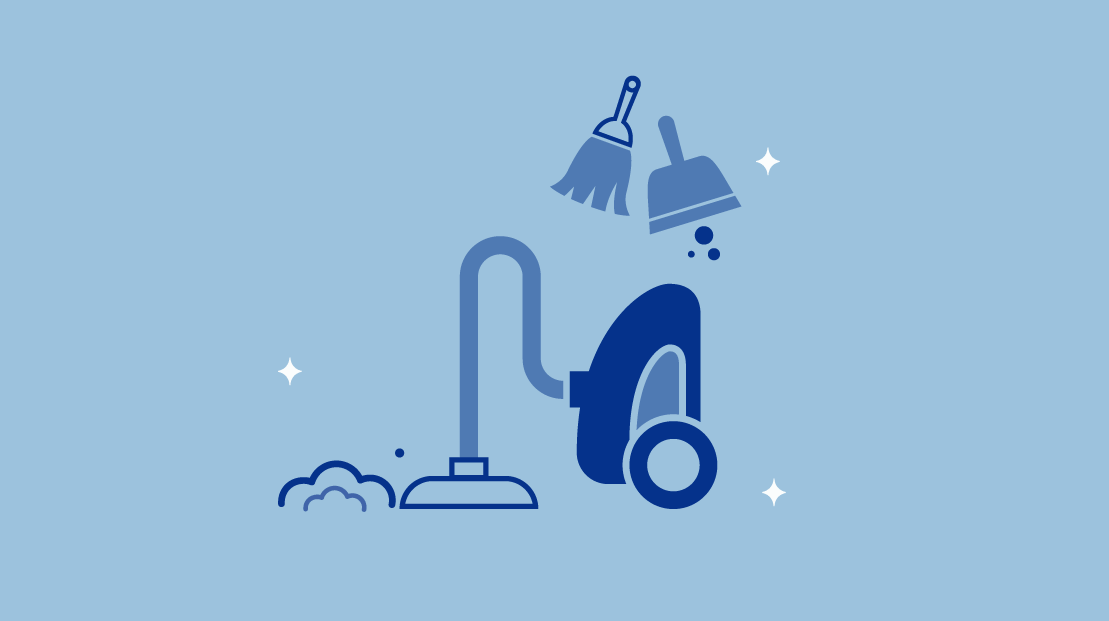Key Takeaways
- Silverfish Identification and Risks: Silverfish can cause significant damage to homes, particularly in dark and damp areas where they feed on materials like paper, glue, and fabrics. Early signs of a silverfish infestation include droppings resembling peppercorns, skin molts, and feed marks on belongings, with potential risks to papers and textiles.
- Prevention and Management Strategies: Eliminate food sources, vacuum regularly, and address damp areas. Natural deterrents like cedar shavings or essential oils can be effective, but professional pest control may be necessary for severe infestations. Regular cleaning and maintaining a dry environment are crucial steps in managing silverfish presence, along with sealing entry points and using airtight containers for food storage.
- Natural Methods for Deterrence: Natural methods, such as cedar shavings, can deter silverfish. Encouraging natural predators like spiders and addressing damp areas are additional strategies to discourage infestations. Keeping the home clean, dry, and organized, along with regular inspections of potential hiding spots, can contribute to a silverfish-free environment.
It can be alarming to find a silverfish in bed with you, but it is a common problem that many people face in their homes. A silverfish infestation can pose a risk, and it is important to understand how to address the issue to ensure a pest-free home.
In this article, we will provide information on silverfish in bed, how to prevent a silverfish infestation, and natural methods to discourage silverfish. We will also discuss identifying and managing silverfish in the home, as well as practical tips to keep your home free from these pests.
By the end of this article, you will have a better understanding of silverfish and how to address their presence in your home.
Understanding Silverfish Infestations
Silverfish are a common household pest that, when left unchecked, can cause significant damage to your home. These insects are typically found in dark, damp areas and are attracted to food sources such as paper, glue, and fabrics. Silverfish eat starchy materials like cotton, linen, and wallpaper, making them a particular nuisance in bedrooms and closets.
If you’ve noticed silverfish droppings or have seen silverfish in your bed or other areas of your home, it’s important to take action to prevent a full-blown infestation. Silverfish can live up to three years and reproduce quickly, so addressing their food sources is key to keeping them at bay.
To prevent silverfish infestations, it’s vital to remove food sources such as books and paper, vacuum carpets and rugs regularly, and address any damp areas in your home. Seal up cracks in walls and floors and consider using airtight containers for food storage.
Identifying silverfish droppings can also be a helpful way to determine if you have a silverfish infestation. These droppings are small, black, and somewhat cylindrical in shape. Silverfish also shed their skin as they grow, so if you see small, silver scales in areas where silverfish are present, that’s another indication of an infestation.
By taking action to prevent silverfish and addressing their food sources, you can keep these pests under control and protect your home from damage.
Taking Action to Prevent Silverfish
If you want to prevent silverfish infestations in your home, proactive measures are key. Consider seeking professional pest control services to address any existing infestations or to establish preventative measures.
Using natural deterrents like cedar oil or diatomaceous earth can also be effective in warding off silverfish. These substances disrupt their mating cycle and cause dehydration, ultimately leading to their demise. Boric acid or essential oils such as lavender or citrus can also help control silverfish populations.
It’s important to note that these methods may not entirely eliminate silverfish, but can greatly reduce their presence. Consistent and proactive measures, combined with good sanitation practices and eliminating their food sources, can help control silverfish populations in your home for the long term.
Identifying and Managing Silverfish in the Home
Silverfish can be a major concern for homeowners, and it’s essential to identify them as early as possible. Are silverfish dangerous? Silverfish are not dangerous, as they won’t harm you.
However, depending on your definition of harmless, these creatures can still cause trouble by chewing through papers, manuscripts, textiles, and packets of dried food in damp kitchens. They can be a major pest if you store books in the bedroom, for example.
Can silverfish bite or sting? Silverfish do not bite or sting; instead, they focus on munching on their preferred foods, like your books or accessible items left in the pantry.
These pests are known to bite humans, though it’s not a common occurrence. However, they are highly attracted to dust and can lead to increased dust mites in your home. To get rid of silverfish, it’s crucial to take quick action and use effective methods.
Identifying Silverfish
Silverfish are small, wingless insects with a distinct silver color and long antennae. They are approximately ¾ inch long and known for their quick movement. One of the best ways to identify silverfish is by their droppings, which are small and black and can be found near food sources and warm crevices like home appliances.
If you spot small dark droppings resembling peppercorns, skin molts, or feed marks like holes and notches on your cherished belongings, you may have discovered the early signs of a silverfish infestation, especially if yellow stains are also present.
Managing Silverfish
To effectively manage silverfish presence in your home, it’s essential to prioritize cleaning and maintenance. Consider removing any clutter, which can create hiding spots for silverfish, and vacuum the floors and carpets regularly to reduce dust buildup.
Furthermore, keep food in airtight containers, remove moisture sources, and seal any cracks or crevices in your home. Natural methods like cedar shavings or essential oils can also be an effective deterrent, but professional pest control services may be required for severe infestations.
Overall, getting rid of silverfish can be challenging, but with the right approach, it’s possible to manage their presence and prevent future infestations. Remember, these pests can pose potential risks, so it’s crucial to take proactive measures to keep your home silverfish-free.
Natural Methods to Discourage Silverfish
When it comes to preventing a silverfish infestation, natural methods can be just as effective as chemical ones. Cedar shavings are a great solution as silverfish dislike the smell of cedar. Scatter cedar shavings in areas where you have noticed silverfish activity.
Encouraging natural predators like spiders can also help control silverfish populations. Keep leaf litter away from the home and dispose of it properly as damp areas with organic material are ideal for silverfish.
Addressing damp areas that attract silverfish is also crucial. Fix leaky pipes and ensure proper ventilation in bathrooms and basements.
By implementing these natural methods, you can discourage silverfish infestations and keep your home pest-free.
Keeping Your Home Silverfish-Free
To keep your home silverfish-free, it’s important to take practical steps to prevent their presence. Use airtight containers for food storage, so silverfish won’t have a food source. Regular cleaning of hidden areas like behind furniture, beneath rugs, and in crevices can prevent silverfish from making a home in your living space.
Removing clutter from your home is a must. Items left unattended can serve as a hiding place for silverfish or become their breeding ground. Seal small cracks and entry points to prevent access. This will help avoid unwelcome guests in your home.
It’s important to know that silverfish have long antennae that they use to feel their way around and find food. Therefore, checking areas where silverfish can nest, like the bathroom cabinets, sewers, and sinks, can help to effectively address their presence.
In this way, you can prevent silverfish infestations in your home by simply keeping things clean, dry, and organized. Following these tips can ensure a pest-free home, free from silverfish infestations.
More to Watch Out for
Aside from silverfish, make sure to be on the lookout for various pests in your bedroom. Check for bed bugs, spiders, fleas, ants, scabies mites, lice, and cockroaches.
Handling mold and mildew in your bedroom can be a challenge too. Stay vigilant to ensure your sleeping space stays free from pests.
- What Attracts Bed Bugs and How to Prevent Them
- How to Get Rid of Bed Bugs in a Mattress
- What Do Bed Bugs Look Like?
- Signs You Have Fleas in Your Bed
- Can Termites Get in My Bed?
- How To Treat Your Mattress For Lice
- How to Get Rid of Flies in the Bedroom
- How to Get Rid of Ants in Your Bed
- How to Get Rid of Scabies From Mattress
- How to Keep Spiders out of the Bedroom
- How to Keep Cockroaches out of the Bedroom
- How to Get Rid of Mosquitos in the Bedroom
- What to Do About Bees in the Bedroom
- Should I Be Concerned About a Tick in Bed?
- How to Keep Mice Out of Your Bed
- How to Keep Centipedes Out of Your Bed
- How to Spot Mold on Mattress & What to Do About It
FAQs
Should I be worried if I see a silverfish?
While silverfish are generally not harmful to humans, their presence can be indicative of underlying issues in your home, such as high humidity or food sources that attract them. Generally, they don’t pose a direct threat.
However, we strongly suggest addressing the conditions that attract silverfish and taking preventive measures to avoid potential damage to paper goods, fabrics, and other items they may feed on.
Why are silverfish in my bedroom?
Silverfish are attracted to dark, damp environments, making bedrooms with high humidity levels or moisture issues prime locations for infestations. They are drawn to starches and sugars found in various household items, such as books, paper, and textiles.
Identifying and addressing these attractants, along with improving ventilation and reducing moisture, can help deter silverfish from inhabiting your bedroom.
Where do silverfish hide in the bedroom?
Silverfish prefer dark, secluded spaces, and in bedrooms, they often hide in cracks, crevices, or behind furniture. They may also seek refuge in closets, attics, or basements. Inspecting these areas regularly and sealing any entry points can help prevent silverfish infestations.
Additionally, reducing clutter and keeping the bedroom dry can make the environment less conducive to their presence.
Will cleaning get rid of silverfish?
Regular cleaning is a crucial step in controlling silverfish infestations. Vacuuming, dusting, and decluttering help eliminate potential food sources and hiding spots. Focus on areas where silverfish are likely to hide, such as cracks, bookshelves, and storage spaces.
Additionally, fixing any leaks or moisture issues and using dehumidifiers can create an inhospitable environment for silverfish, discouraging their presence.
Do silverfish mean mold in the bedroom?
While silverfish are often associated with damp conditions, their presence does not necessarily indicate mold in the bedroom. However, both silverfish and mold thrive in humid environments. If you’re dealing with silverfish, it’s essential to address the underlying moisture issues that attract them, as this can contribute to mold growth.
Regular inspections for leaks, proper ventilation, and maintaining optimal humidity levels can help prevent both silverfish and mold in your bedroom.
Conclusion
Now that you are aware of the potential risks associated with silverfish in bed, it’s important to take proactive steps to prevent their presence in your home. Remember, silverfish infestations can be detrimental to your health and property, leading to damage and costly repairs.
By incorporating natural deterrents like cedar shavings, using airtight containers, and regularly cleaning hidden crevices, you can discourage silverfish from invading your space.
If you suspect an infestation, seek the help of professional pest control services to effectively manage the situation. Don’t let pests like silverfish take over your bed or home- keep your space pest-free and enjoy a peaceful sleep!
About the author
Mitchell Tollsen is a graduate student and a freelance writer who’s contributed to the Early Bird blog for three years. Mitchell’s always been fascinated by the science of sleep and the restorative processes our bodies undergo when at rest. The self-titled “Sleep Expert” is always looking for ways to improve his shut-eye, and throughout the years has implemented numerous lifestyle changes and tried dozens of sleep-promoting gadgets to determine the best ways to truly get better rest.
View all posts





